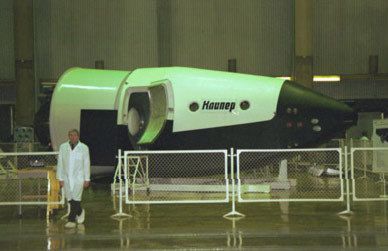-
 Astroparticle
Astroparticle
-
 Point-to-point link
Point-to-point link
-
 Ogino method
Ogino method
-
 Spinel structure
Spinel structure
-
 Delirium
Delirium
-
 Large Canary Island Telescope
Large Canary Island Telescope
-
 Gametangium
Gametangium
-
 Stellarator
Stellarator
-
 Myrmecologist
Myrmecologist
-
 STED microscopy
STED microscopy
-
 Starch
Starch
-
 Peptide bond
Peptide bond
-
 Faraday cage
Faraday cage
-
 Hox gene
Hox gene
-
 Mandible
Mandible
-
 Breast-feeding
Breast-feeding
-
 Permafrost
Permafrost
-
 Ring Nebula
Ring Nebula
-
 Seveso disaster
Seveso disaster
-
 Obliquity
Obliquity
-
 Colostomy
Colostomy
-
 Balm
Balm
-
 Free Software Foundation
Free Software Foundation
-
 Equatorial table
Equatorial table
-
 FEAL
FEAL
-
 Incursion
Incursion
-
 Macromolecule
Macromolecule
-
 Cardiac muscle
Cardiac muscle
-
 Bald cypress
Bald cypress
-
 Tax credit
Tax credit
Kliper
Kliper was a space vessel 10 m long with a diameter of about 3 m, designed to stay in orbit for about 10 days. It was to have had a mass of 14.5 tonnes, and would have carried 2 pilots and up to 4 passengers or, in the cargo version, 2 pilots and up to 700 kg of payload. Energia had been working on its development since 2000. However, its design went back to the early 1990s when Russia was considering a larger space vehicle that would have used the Angara or Zenith rockets for launching.
The Kliper was to have been composed of three main modules. The first module would have been the SAS, an emergency system for the crew at the tip of the vessel, above the nose. It could only have been used for problems on the launch pad before launch. The second module would have been the reusable atmospheric re-entry vehicle, designed to be used 25 times without heavy maintenance. It would have been fitted with two rows of seats with the 2 pilots in the first row and 3 passengers in the second row. According to the mission profile, the free space behind the second row of seats could have been taken up either by a fourth passenger or by payload.
The third part of the vessel was to have been expendable. This was the service module essentially built around a modified Soyuz capsule. It would have been equipped with solar panels and a docking system for the Space Station. Finally, it would have housed all the life-support equipment for the crew, plus the tanks (fuel, oxygen, water).
No final choice was made for the landing system and two mission profiles were studied. RKK Energia designed a winged version of the vessel, which would have allowed it to glide down and land like the American shuttles. The other mission profile was the standard landing system used by the Soyuz which had proved itself many times over. The Kliper would have used a system of three uncontrolled parachutes and several small engines which would have been ignited shortly before landing. With this system the vessel would have been able to land within a radius of less than 1 kilometre from the planned spot on terra firma. Energia considered developing a system with an inflatable cushion to lessen the shock on the ground and which would have allowed a sea landing
The first launch (test flight) was to have been in 2010 or 2011.
 The Kliper space vessel.
The Kliper space vessel.
Latest
Fill out my online form.



